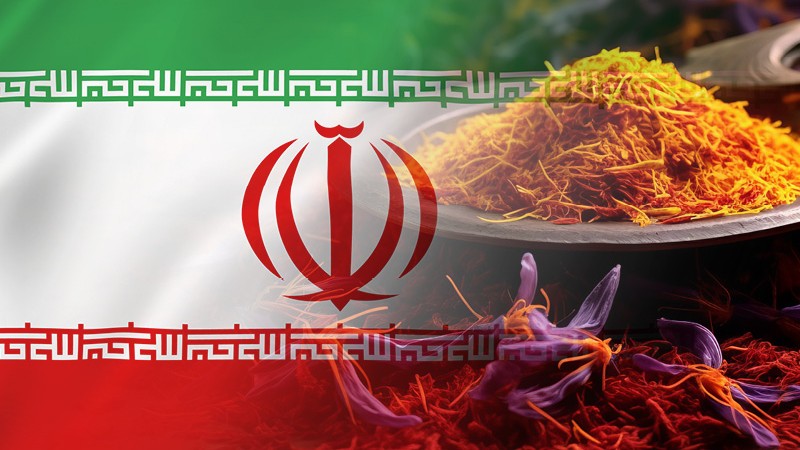Pistachios and Saffron: “Domestic consumption has decreased by more than 50%”
January 1, 2024 at 1:00 PM ,
Der AUDITOR

Which were the main difficulties faced by the Iranian pistachio and saffron market in 2023? What has changed compared to the last two years?
The primary challenges in exporting Iran's saffron and pistachios include recent climatic disruptions, the abolition of foreign exchange obligations, and the requirement to transact foreign currency through the NIMA system. Additionally, sanctions against Iran, coupled with its non-membership in the Financial Action Task Force (FATF), hinder access to foreign currency from exports, complicating currency transfer. Smuggling and increased transportation costs further exacerbate these issues. Iran's agricultural products, notably pistachios, saffron, and raisins, are globally renowned. However, countries like the USA, Greece, Spain and Turkey have emerged as formidable competitors by enhancing production and quality.
Iranian pistachio producers have endured two consecutive years of frost damage, leading to a significant decline in production. The Iranian Pistachio Association reported a decrease from 220,000 mt in 2022 to 150,000 mt in 2023. Similarly, droughts have adversely impacted saffron production, with predictions indicating a further reduction.
Exporters face obstacles in fulfilling foreign exchange contracts and navigating the removal of exchange obligations. Since 2020, the Iranian government has mandated that exporters deposit earned foreign currency into the NIMA system, leading to significant financial losses due to currency value discrepancies. This policy has deterred exporters, despite ample product availability. US sanctions, particularly financial and banking restrictions, pose additional hurdles, deterring buyers and complicating monetary transactions. Iran's exclusion from the FATF further limits banking interactions with global financial institutions. Moreover, the smuggling of Iranian pistachios and saffron undermines legal exports, as smugglers can offer lower prices due to the absence of customs duties and taxes.
What impact do the wars in Ukraine and Israel have on the market? Are the political tensions in various African countries also a cause for concern here?
The ongoing conflict between Ukraine and Russia has affected Iranian agricultural exports, notably to CIS countries. Although there has been a slight increase in exports to these regions in 2023 compared to the onset of the conflict, the overall volume has decreased substantially. Iran's agricultural trade with Israel and the Gaza region is negligible due to political constraints, so recent developments in these areas have not significantly impacted Iranian exports. However, political instability in African countries has minimally affected Iran's agricultural exports, given the low volume of trade with these regions.
In 2023, climate change and its impact on global commodity production was felt like never before. What should growers and market players be prepared for in the coming years?
Climatic conditions, including droughts and frosts, have severely affected Iran's agricultural production, particularly pistachios and saffron. Iran has fallen from the top pistachio producer to third in the global ranking. Persistent drought conditions threaten to exacerbate this decline. The drought has also significantly weakened the Iranian saffron crocus, leading to reduced production.
Commodity prices have risen significantly in many markets for another year in a row. Inflation and higher production costs are leaving their mark; the pistachio and saffron markets are no exception here. Do you think consumers will look for cheaper alternatives in the long run?
Domestic consumption of pistachios and saffron in Iran has decreased by more than 50% in the past year, primarily due to increased prices and reduced purchasing power. Despite this, the global export markets for these products differ. The relative devaluation of the Iranian Rial against foreign currencies has made these products more affordable internationally, compensating for increased production costs and inflation domestically.
Looking at the current market situation, what challenges might the pistachio and saffron markets face in the 2024/2025 season?
The most pressing issues for the 2024-2025 production of pistachios and saffron include reduced yields due to climatic stresses and drought. Additionally, regional conflicts, ongoing sanctions, and banking and financial transfer challenges will continue to impact Iran's export market. The suspension of nuclear negotiations and the uncertain future of the nuclear agreement further compound these challenges. Domestic export laws, such as foreign exchange contracts and restrictions on certain agricultural exports, will also influence trade dynamics. European regulations on aflatoxin and mycotoxin levels in imported pistachios could notably affect exports to Europe starting from 2024.





